-
 Bitcoin
Bitcoin $107,031.8162
-2.52% -
 Ethereum
Ethereum $2,621.4228
-2.51% -
 Tether USDt
Tether USDt $1.0001
-0.04% -
 XRP
XRP $2.2397
-4.12% -
 BNB
BNB $685.2354
-0.57% -
 Solana
Solana $169.7513
-4.44% -
 USDC
USDC $0.9998
0.01% -
 Dogecoin
Dogecoin $0.2178
-4.24% -
 TRON
TRON $0.2742
-0.79% -
 Cardano
Cardano $0.7353
-3.78% -
 Sui
Sui $3.5357
-4.72% -
 Hyperliquid
Hyperliquid $32.8671
-11.41% -
 Chainlink
Chainlink $15.3525
-3.68% -
 Avalanche
Avalanche $22.8728
-2.22% -
 Stellar
Stellar $0.2798
-3.35% -
 Toncoin
Toncoin $3.4068
13.49% -
 UNUS SED LEO
UNUS SED LEO $9.1041
2.33% -
 Shiba Inu
Shiba Inu $0.0...01398
-3.54% -
 Bitcoin Cash
Bitcoin Cash $405.5943
-3.07% -
 Hedera
Hedera $0.1818
-4.36% -
 Litecoin
Litecoin $93.6910
-3.21% -
 Polkadot
Polkadot $4.4305
-2.75% -
 Monero
Monero $349.3281
-8.45% -
 Bitget Token
Bitget Token $5.1994
-3.07% -
 Pepe
Pepe $0.0...01346
-3.80% -
 Dai
Dai $0.9998
0.01% -
 Pi
Pi $0.7211
-3.95% -
 Ethena USDe
Ethena USDe $1.0007
0.00% -
 Uniswap
Uniswap $6.6488
1.82% -
 Aave
Aave $261.6923
-5.14%
Is DMI effective in the shrinking rise? Is DMI still accurate when the volume and price diverge?
DMI can signal weakening trends during a shrinking rise or volume-price divergence, but traders should use it with volume indicators for better accuracy.
May 26, 2025 at 11:08 am
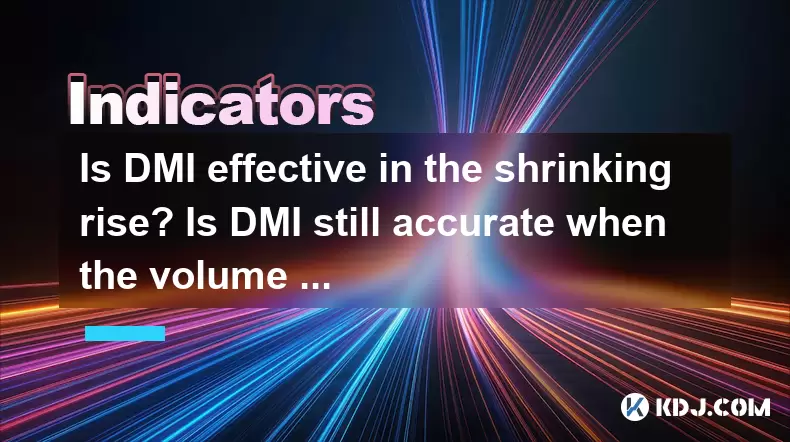
The Directional Movement Index (DMI) is a widely used technical indicator in the cryptocurrency trading world, designed to help traders identify the direction of a market trend and its potential strength. The question of whether DMI is effective during a shrinking rise and whether it remains accurate when volume and price diverge are critical for traders who rely on this tool. Let's delve into these aspects in detail.
Understanding the Directional Movement Index (DMI)
The Directional Movement Index (DMI) consists of three lines: the Positive Directional Indicator (+DI), the Negative Directional Indicator (-DI), and the Average Directional Index (ADX). The +DI and -DI lines help traders determine the direction of the trend, while the ADX line measures the strength of the trend. When the +DI line is above the -DI line, it suggests a bullish trend, and when the -DI line is above the +DI line, it indicates a bearish trend. The ADX line, when above 25, generally indicates a strong trend, while values below 20 suggest a weak or non-existent trend.
DMI in a Shrinking Rise
A shrinking rise refers to a scenario where the price continues to increase, but the magnitude of the rises becomes smaller over time. This can be an indication of weakening bullish momentum, and traders often look for signals that might suggest an impending reversal or consolidation.
When using DMI in such a scenario, traders should pay close attention to the ADX line. If the ADX line starts to decline during a shrinking rise, it could indicate that the trend's strength is waning. This might be a signal for traders to prepare for potential reversals or to adjust their strategies. Additionally, if the +DI and -DI lines begin to converge, it may further suggest that the bullish momentum is losing steam.
Accuracy of DMI When Volume and Price Diverge
Volume and price divergence is a situation where the price movement does not align with the trading volume. For instance, if the price is rising, but the volume is decreasing, it might indicate a lack of conviction in the price movement.
The effectiveness of DMI in such scenarios depends on the interpretation of the indicator alongside other factors. DMI primarily focuses on price movements and does not directly account for volume. Therefore, when volume and price diverge, traders should use DMI in conjunction with volume indicators like the On-Balance Volume (OBV) or the Volume Weighted Average Price (VWAP).
If the ADX line remains strong (above 25) despite the volume-price divergence, it might still suggest a robust trend. However, if the ADX line starts to weaken alongside the volume divergence, it could indicate that the trend's sustainability is in question. Traders should be cautious and consider other confirming indicators before making trading decisions based solely on DMI.
Practical Application of DMI in Shrinking Rise and Volume-Price Divergence
To effectively use DMI in scenarios of shrinking rise and volume-price divergence, traders need to follow a systematic approach. Here’s how to do it:
- Identify the Trend Using +DI and -DI Lines: Start by observing the +DI and -DI lines. If the +DI is above the -DI, it indicates a bullish trend, and vice versa for a bearish trend.
- Monitor the ADX Line: Pay close attention to the ADX line. If it’s above 25, the trend is strong. If it starts to decline during a shrinking rise or during volume-price divergence, it may signal a weakening trend.
- Use Additional Volume Indicators: Since DMI does not account for volume, use volume indicators like OBV or VWAP to confirm or contradict the DMI signals. If the volume indicators suggest a divergence, be more cautious with DMI signals.
- Combine DMI with Other Technical Indicators: Use DMI in conjunction with other technical indicators like Moving Averages, RSI, or MACD to get a more comprehensive view of the market. This can help in confirming or questioning the signals provided by DMI.
Case Study: DMI in a Shrinking Rise
Let's consider a hypothetical scenario where Bitcoin (BTC) is experiencing a shrinking rise. The price of BTC has been increasing over the past month, but the daily price gains have been getting smaller.
- Initial Observation: The +DI line is above the -DI line, indicating a bullish trend. The ADX line is at 30, suggesting a strong trend.
- Shrinking Rise: Over the next few weeks, the daily price gains become smaller. The +DI and -DI lines start to converge, and the ADX line drops to 24.
- Interpretation: The convergence of the +DI and -DI lines, coupled with the declining ADX, suggests that the bullish trend is losing strength. Traders might consider taking profits or preparing for a potential reversal.
Case Study: DMI During Volume-Price Divergence
Now, let's examine a situation where Ethereum (ETH) is experiencing a volume-price divergence. The price of ETH is rising, but the trading volume is decreasing.
- Initial Observation: The +DI line is above the -DI line, and the ADX line is at 28, indicating a strong bullish trend.
- Volume-Price Divergence: Over the next week, the price of ETH continues to rise, but the volume decreases significantly. The ADX line remains steady at 28.
- Interpretation: Despite the volume-price divergence, the strong ADX line suggests that the trend remains robust. However, traders should use additional volume indicators like OBV to confirm the divergence. If OBV also shows a decline, it might be a warning sign that the trend could be losing steam.
DMI and Market Psychology
Market psychology plays a crucial role in the effectiveness of technical indicators like DMI. During a shrinking rise, the market sentiment might shift from optimism to caution, as traders become aware of the diminishing gains. This shift can be reflected in the DMI's signals, particularly in the convergence of the +DI and -DI lines and the declining ADX.
Similarly, volume-price divergence can be a reflection of market uncertainty. When the price rises but the volume falls, it might indicate that fewer traders are willing to buy at higher prices, suggesting a lack of confidence in the ongoing trend. DMI can capture these shifts in sentiment, but traders must interpret these signals in the context of overall market conditions.
Frequently Asked Questions
Q: Can DMI be used effectively in highly volatile cryptocurrency markets?
A: Yes, DMI can be used effectively in volatile markets, but it is crucial to combine it with other indicators and to adjust the sensitivity of the indicator to better suit the market conditions. High volatility can lead to more frequent crossovers of the +DI and -DI lines, so traders should be cautious and use additional confirming signals.
Q: How often should the DMI settings be adjusted for different cryptocurrencies?
A: The DMI settings may need to be adjusted based on the specific characteristics of each cryptocurrency. For more volatile cryptocurrencies, a shorter period setting might be more appropriate, while for less volatile ones, a longer period setting could be better. Traders should experiment with different settings and monitor the results over time.
Q: Is it possible to use DMI for short-term trading in the crypto market?
A: Yes, DMI can be used for short-term trading, but it is essential to use shorter time frames and possibly adjust the DMI settings to be more responsive to quick price movements. Traders should also combine DMI with other short-term indicators like RSI or MACD to increase the accuracy of their trading signals.
Q: How can DMI help in identifying potential entry and exit points in crypto trading?
A: DMI can help identify potential entry and exit points by signaling trend direction and strength. When the +DI line crosses above the -DI line and the ADX line is rising, it might be a good entry point for a long position. Conversely, when the -DI line crosses above the +DI line and the ADX line is rising, it could be a signal to enter a short position. For exiting trades, traders should watch for the ADX line to start declining, indicating a weakening trend, or for the +DI and -DI lines to converge, suggesting a potential trend reversal.
Disclaimer:info@kdj.com
The information provided is not trading advice. kdj.com does not assume any responsibility for any investments made based on the information provided in this article. Cryptocurrencies are highly volatile and it is highly recommended that you invest with caution after thorough research!
If you believe that the content used on this website infringes your copyright, please contact us immediately (info@kdj.com) and we will delete it promptly.
- Bitcoin (BTC) Price Prediction: Next Target $112,000 as Double Bottom Pattern Plays Out
- 2025-05-29 04:35:20
- The launch of the first XRP futures ETF (XRPI) marks a major step forward for institutional crypto adoption.
- 2025-05-29 04:35:19
- Quant (QNT) maintains a recovery trend, with the layer 2.5 network announcement for institutions and decentralized finance (DeFi)
- 2025-05-29 04:30:13
- With the conclusion of Crypto Dinner, Trump Coin price could continue crashing exacerbating its 20% dip caused by whale sell-offs
- 2025-05-29 04:30:13
- Uniswap's UNI Price Aims Fresh Increase
- 2025-05-29 04:25:13
- Monero (XMR) Returns to Top 25 Cryptocurrencies by Market Capitalization
- 2025-05-29 04:25:13
Related knowledge
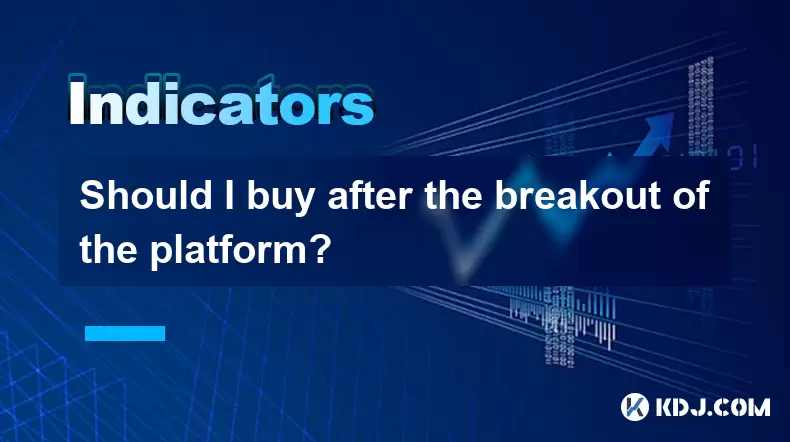
Should I buy after the breakout of the platform?
May 29,2025 at 04:35am
Understanding Breakouts in CryptocurrencyBreakouts in the cryptocurrency market occur when the price of a digital asset moves above a defined resistance level or below a support level, often leading to increased volatility and trading activity. A breakout can signal the start of a new trend, either bullish or bearish, depending on the direction of the p...
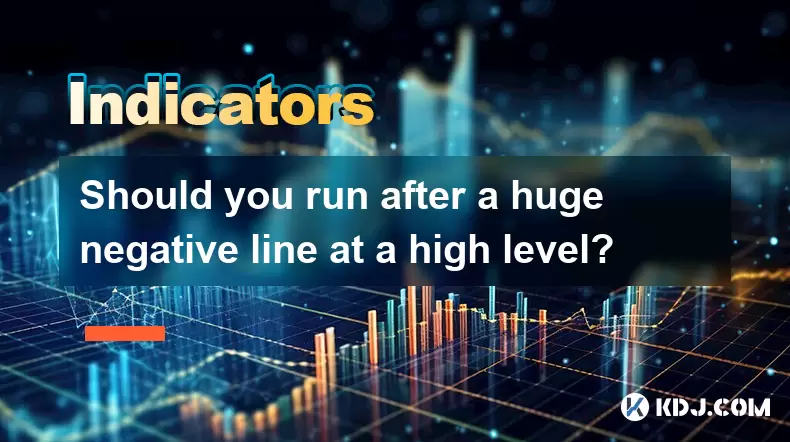
Should you run after a huge negative line at a high level?
May 29,2025 at 04:21am
Should you run after a huge negative line at a high level? When navigating the volatile world of cryptocurrencies, one of the most challenging decisions traders face is whether to chase a significant price drop after a high. A huge negative line at a high level often signals a sharp reversal in market sentiment, and understanding how to react to such mo...
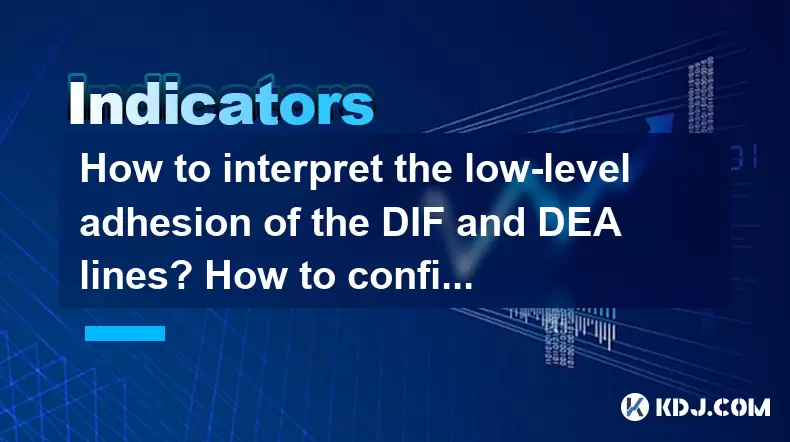
How to interpret the low-level adhesion of the DIF and DEA lines? How to confirm the direction selection signal?
May 29,2025 at 02:49am
Understanding the low-level adhesion of the DIF and DEA lines in the context of cryptocurrency trading involves delving into the specifics of the Moving Average Convergence Divergence (MACD) indicator. The MACD is a trend-following momentum indicator that shows the relationship between two moving averages of a cryptocurrency's price. The DIF line, also ...
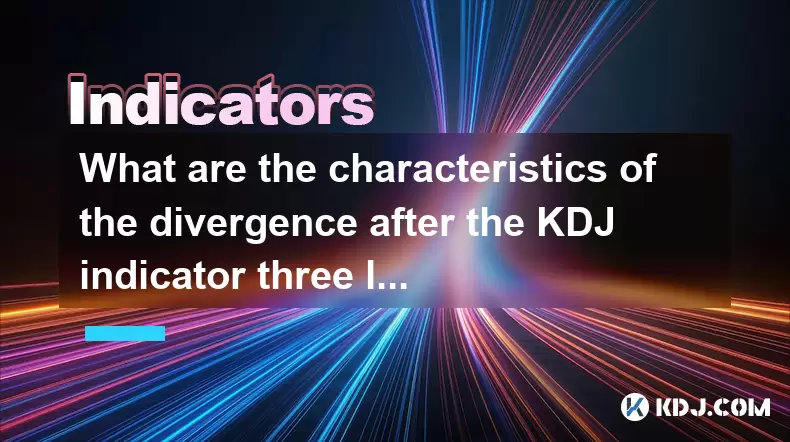
What are the characteristics of the divergence after the KDJ indicator three lines merge into one? What are the direction selection signals?
May 29,2025 at 03:14am
The KDJ indicator is a popular tool used in the cryptocurrency trading community to identify potential trend reversals and to gauge the momentum of price movements. When the three lines of the KDJ indicator—namely the K line, D line, and J line—merge into one, it often signifies a significant event in the market. This phenomenon is known as a divergence...
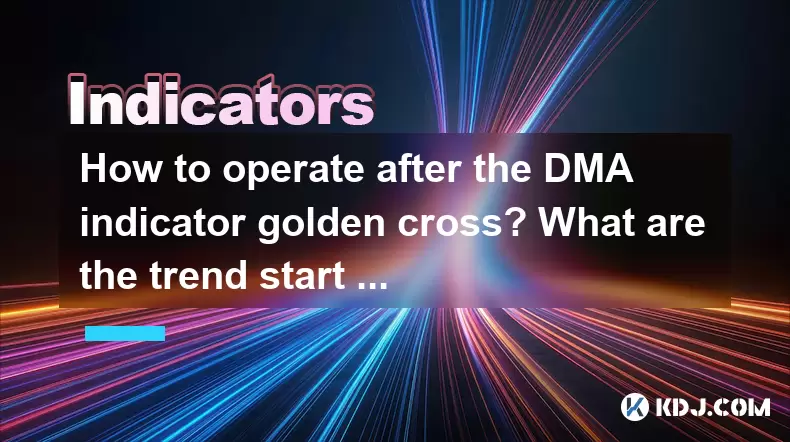
How to operate after the DMA indicator golden cross? What are the trend start signals?
May 29,2025 at 12:21am
How to Operate After the DMA Indicator Golden Cross? What Are the Trend Start Signals? The DMA (Dual Moving Average) indicator is a popular tool among cryptocurrency traders for identifying potential trend changes and entry points. A golden cross on the DMA indicator occurs when a shorter-term moving average crosses above a longer-term moving average, s...
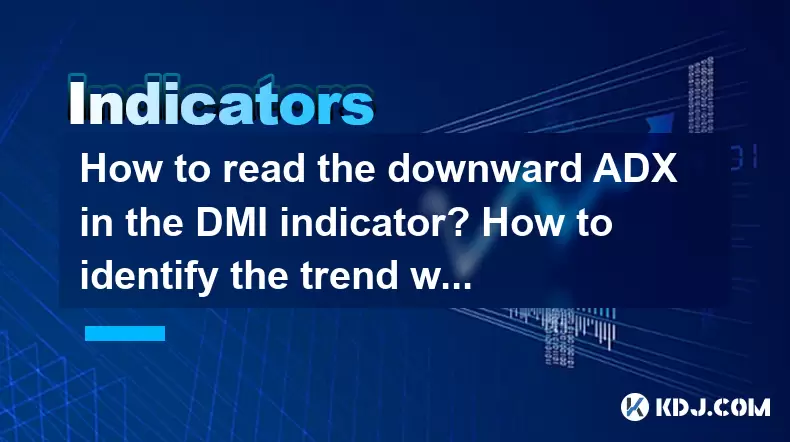
How to read the downward ADX in the DMI indicator? How to identify the trend weakening signal?
May 28,2025 at 10:28pm
The Directional Movement Index (DMI) is a popular technical analysis tool used by cryptocurrency traders to determine the strength of a trend and potential price movements. One of the key components of the DMI is the Average Directional Index (ADX), which helps traders gauge the strength of a trend, whether it's upward or downward. In this article, we w...

Should I buy after the breakout of the platform?
May 29,2025 at 04:35am
Understanding Breakouts in CryptocurrencyBreakouts in the cryptocurrency market occur when the price of a digital asset moves above a defined resistance level or below a support level, often leading to increased volatility and trading activity. A breakout can signal the start of a new trend, either bullish or bearish, depending on the direction of the p...

Should you run after a huge negative line at a high level?
May 29,2025 at 04:21am
Should you run after a huge negative line at a high level? When navigating the volatile world of cryptocurrencies, one of the most challenging decisions traders face is whether to chase a significant price drop after a high. A huge negative line at a high level often signals a sharp reversal in market sentiment, and understanding how to react to such mo...

How to interpret the low-level adhesion of the DIF and DEA lines? How to confirm the direction selection signal?
May 29,2025 at 02:49am
Understanding the low-level adhesion of the DIF and DEA lines in the context of cryptocurrency trading involves delving into the specifics of the Moving Average Convergence Divergence (MACD) indicator. The MACD is a trend-following momentum indicator that shows the relationship between two moving averages of a cryptocurrency's price. The DIF line, also ...

What are the characteristics of the divergence after the KDJ indicator three lines merge into one? What are the direction selection signals?
May 29,2025 at 03:14am
The KDJ indicator is a popular tool used in the cryptocurrency trading community to identify potential trend reversals and to gauge the momentum of price movements. When the three lines of the KDJ indicator—namely the K line, D line, and J line—merge into one, it often signifies a significant event in the market. This phenomenon is known as a divergence...

How to operate after the DMA indicator golden cross? What are the trend start signals?
May 29,2025 at 12:21am
How to Operate After the DMA Indicator Golden Cross? What Are the Trend Start Signals? The DMA (Dual Moving Average) indicator is a popular tool among cryptocurrency traders for identifying potential trend changes and entry points. A golden cross on the DMA indicator occurs when a shorter-term moving average crosses above a longer-term moving average, s...

How to read the downward ADX in the DMI indicator? How to identify the trend weakening signal?
May 28,2025 at 10:28pm
The Directional Movement Index (DMI) is a popular technical analysis tool used by cryptocurrency traders to determine the strength of a trend and potential price movements. One of the key components of the DMI is the Average Directional Index (ADX), which helps traders gauge the strength of a trend, whether it's upward or downward. In this article, we w...
See all articles
























































































